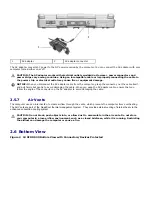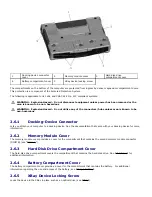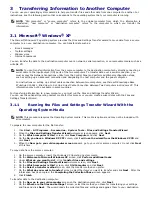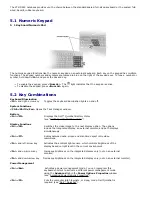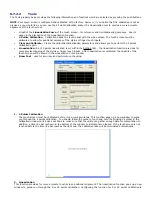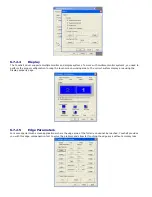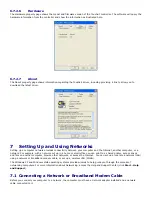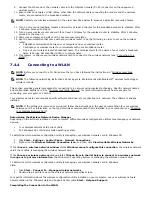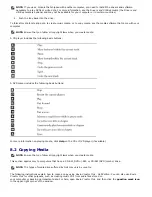
the entire screen cannot be displayed at one time. For example, the taskbar that usually appears at the bottom of the
desktop may no longer be visible. To view the rest of the screen, use the touch pad or track stick to pan up, down, left,
and right.
NOTICE: You can damage an external monitor by using an unsupported refresh rate. Before adjusting the refresh
rate on an external monitor, see the user’s guide for the monitor.
6.5
Dual Independent Display Mode
You can attach an external monitor or projector to your computer and use it as an extension of your display (known as
"dual independent display" or "extended desktop" mode). This mode allows you to use both screens independently and
drag objects from one screen to the other, effectively doubling the amount of viewable work space.
1.
Connect the external monitor, TV, or projector to the computer.
2.
Under Pick a category, click Appearance and Themes.
3.
Under Pick a task..., click the area you want to change, or under or pick a Control Panel icon, click Display.
4.
In the Display Properties window, click the Settings tab.
NOTE: If you choose a resolution or color palette that is higher than the display supports, the settings adjust
automatically to the closest supported values. For more information, see your operating system documentation.
5.
Click the monitor 2 icon, click the Extend my Windows desktop onto this monitor check box, and then click
Apply.
6.
Change Screen resolution to the appropriate sizes for both displays and click Apply.
7.
If prompted to restart the computer, click Apply the new color setting without restarting and click OK.
8.
If prompted, click OK to resize your desktop.
9.
If prompted, click Yes to keep the settings.
10.
Click OK to close the Display Properties window.
To disable dual independent display mode:
1.
Click the Settings tab in the Display Properties window.
2.
Click the monitor 2 icon, uncheck the Extend my Windows desktop onto this monitor option, and then click
Apply.
If necessary, press <Fn><F8> to bring the screen image back to the computer display.
6.6
Swapping Primary and Secondary Displays
To swap your primary and secondary display designations (for example, to use your external monitor as your primary
display after docking):
1.
Click the Start button and click Control Panel.
2.
Under Pick a category, click Appearance and Themes.
3.
Under Pick a task..., click the area you want to change, or under or pick a Control Panel icon, click Display.
4.
Click the Settings tab
→
Advanced
→
Displays tab.
See the documentation that came with your video card for additional information.
6.7
DirectVue™ Touch Display Information
If you purchased your XFR D630 Fully Rugged Notebook with the optional DirectVue Touch Display please review the
following user instructions and tips.
The XFR D630 provides an optional touch screen display for entering and selecting data using an approved pointing device
such as your finger, a passive stylus or any non-abrasive smooth blunt object that will not damage the touch display.
NOTICE: To ensure you properly care for and maintain your touch display, please refer to
159H
Cleaning Your Computer
and adhere to the care instructions regarding the display.
CAUTION: The optional DirectVue
TM
Touch Display has been designed to accept finger touch as well
as passive stylus input directly onto the screen. With the optional DirectVue
TM
Touch Display, a
stylus is included with the XFR D630 for use in selecting items on the touch screen. Other pointing
devices can be used with the touch screen such as any non-abrasive, smooth or blunt object that will
not damage the touch screen display. The touch screen surface can be damaged by ink pens, marker


